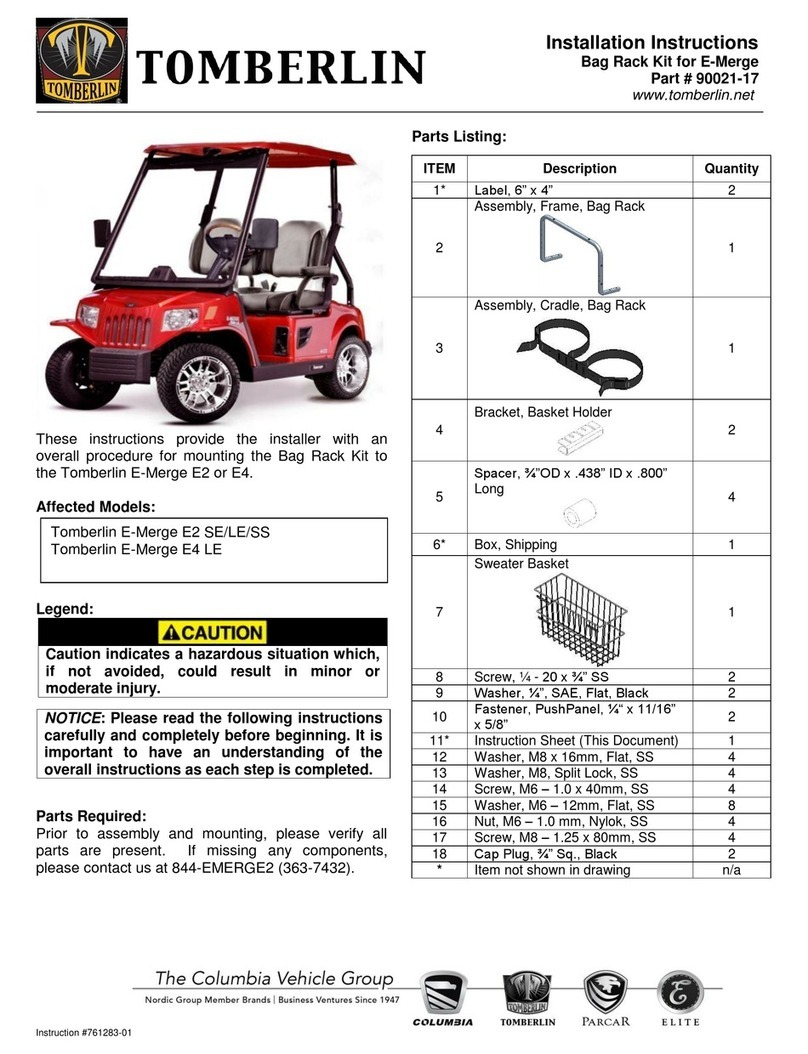Page 5
Step 1: Verify Reservoir is Full
Locate the brake fluid reservoir (under the front seat on passenger side). Remove the cap and rubber seal/bladder, verify
there is adequate brake fluid and fill if necessary. Loosely put the cap back on the reservoir. This will allow fluid to fill the
system easily during the procedure.
Important Note: Check the fluid level frequently during the procedure and add brake fluid as required. Do not allow the
fluid to drop below the lowest position depicted above. Otherwise air will enter the system and the entire procedure
must be repeated.
Step 2: Raise the Cart
Jack up the car and place on JACK STANDS. Remove all wheels and tires, placing the wheels back side down making sure
not to scratch the finish.
Overview of Bleeding Process
•Always bleed all four brakes. Never bleed just
the front, or just the rear, or just one wheel.
•The master cylinder has two internal chambers:
one for the front wheels and the other for the
rear wheels.
•You may begin with either the two front wheels
or two rear wheels. However, it is
recommended to start with the rear passenger
side. (They are easier to bleed.)
•Always bleed the wheel that is furthest from the
master cylinder first, followed by the
corresponding front/rear wheel.
Example: Starting at the right rear wheel (further
from the master cylinder than the left rear wheel),
attach the clear tubing with a catch bottle to the
bleeder screw. An assistant should sit in the driver’s
seat and rapidly pump the brake pedal a minimum of
eight times, then hold down the brake pedal down as far as possible. This is when you open the bleeder screw to release
air, then close it. Instruct the assistant to pump up the brakes again. Repeat this process until clear fluid with no air
bubbles is coming from the brake system. Remember to continually check the reservoir and top off with brake fluid.
When you begin to see what is referred to as froth (a mixture of brake fluid and air) –pressure will begin to rise quickly
with each successive brake pump and release.
The following steps (3-6) will explain and depict what is performed on each wheel.



























